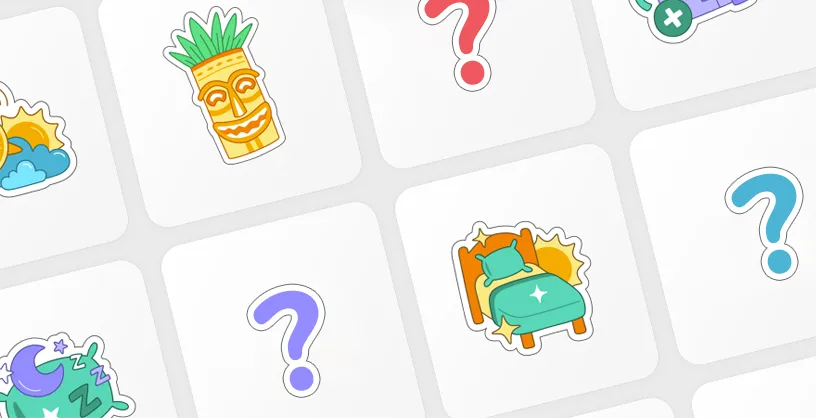
If you are a parent or an educator working with children it's likely you are well aware of Captain Underpants or Dog Man. Both series of children's books were authored by Dav Pilkey who, as a child, was diagnosed with both ADHD and dyslexia. Pilkey describes his learning difficulties as superpowers that shaped him as a writer and a creative person.
Pilkey's teachers struggled to deal with his hyperactivity, often sending him to sit in the hallway or to the principal's office where he was paddled with a board. Pilkey's experiences of isolation and punishment are ones that many with similar difficulties can likely relate to. Luckily, for Pilkey, his home environment was far warmer.
Pilkey explains, "My parents created a very safe environment at home for me. So, when I came home from school, they created an environment that was very encouraging; they found out the things that I loved the best and at the time I loved making stories and drawing comics. So my parents commissioned comic books for me. They asked me if I would draw a whole brand new comic series for them."
What Pilkey experienced from a young age was connection. A connection can be loosely defined as a link or bond one shares with another, usually in alignment with shared emotions or experiences.
Dr. Hallowell and Ratey, both leaders in the field of ADHD research and authors of ADHD 2.0, emphasize the importance of connection and community as a lifeline for those stigmatized and marginalized by their learning difficulties.
Vitamin Connection
Hallowell and Ratey firmly believe that rather than a learning deficit, many children 'diagnosed' with ADHD are facing a 'connection deficit' or 'Vitamin C(onnection) deficit'-- a problem far more debilitating than their difficulties in the classroom. The real learning disabilities, they claim, are "fear, shame and believing that you can't do something.".
Many children with ADHD, and other learning difficulties, feel different, alienated, and misunderstood. In school they often face teasing and bullying: 'He's Special Ed', 'He's on pills'. The results are children who feel depressed and unmotivated. As scientists like to do, a name has been given to this too -- 'Rejection Sensitive Dysphoria'. The phrase was introduced by Dr William Dodson, psychiatrist and ADHD expert, and refers to "extreme emotional sensitivity to being criticized or rejected, whether real or perceived." It is more commonly experienced by those with ADHD. According to Dodson, by the age of 12, children with ADHD received over 20 000 more negative messages from parents, teachers, and adults than those children without ADHD.
Most children with learning difficulties are simply not getting enough human connection. Vitamin Connection, or what Hallowell and Ratey call 'Psychosocial integration' is the antidote. It is a warm and safe environment that ought to be created at home, at school, and in organizations.
4 Ways to Encourage Kids With ADHD to Connect
Relationships between parents and children with ADHD are commonly strained. Finding a balance between managing difficult behavior and fostering meaningful connections can be extremely difficult and often stressful.
Simple steps can however be taken to create a safer environment in the home and encourage connection. We've put together a few suggestions, inspired by ADHD 2.0.
1. Introduce Family Meal Time.
Make a habit out of having regular meals as a family. Only 30% of Americans eat meals together regularly. This is unfortunate, considering the positive impact that the sharing of meals has on both children and parents.
A study by Columbia University has shown that children who share regular meals together with their families or household have better academic results. What's more, a Harvard University study has shown that conversations at dinner improve vocabulary and reading skills -- more so than reading to your child.
More importantly, these family meals result in higher-quality relationships and ultimately create a space for connection.
Be intentional about meal time. Make sure mobile phones and electronic devices are put away and plan conversation topics. Meal times are also a great space to invite guests or neighbors and introduce diverse conversations.
Make meal times an event, not just an opportunity to shovel down food. Why not have meals outside in the summer? Or pack up a picnic and eat at a nearby park? See more of our tips for family mealtime here.
2. Connect with Community Members
Many of us are far too comfortable with our social group and rarely step out of our daily rhythms to meet new people and make new connections. Our children naturally follow suit. Popping into your local coffee shop a few times a week and offering a friendly nod or greeting to new faces can be a great way to break the ice and encourage connection.
The same can be done at local gas stations. Introduce your children to the people at the station and get them involved. Be sure to frequent the same gas station as much as possible to cultivate these relationships. Connection does not need to always be deep, it can be anywhere and anytime.
Take advantage of curious minds and take your children to interesting places to meet new and fascinating people. A fire station is a great place to start -- meet a fireman and learn about his job. According to Hallowell and Ratey, firemen love to talk about their job and are normally great connectors.
Be open to the fact that your child could greatly benefit from a charismatic mentor outside of the family. A coach, a family friend, or a community member who inspires them can often provide your child with something that you cannot.
3. Adopt a Furry Friend
Pets have long been welcomed into families to keep children, and adults, company. Many are used as emotional and medical support animals for those with various conditions and needs. They are the ultimate support system and it helps that they are also incredibly cute too. Pets can give us 'Vitamin C' that no other human can.
Dogs are known to be the greatest human companion, and 'man's best friend', but other pets such as cats, parrots, hamsters, turtles, fish, or even snakes, can provide a sense of connection.
If you don't already have a pet, we encourage adopting and involving your child in the process. Let them help choose the animal that they feel most drawn to and be sure to distribute appropriate chores to involve them in raising and caring for the animal. Connection goes both ways after all. This can also be a great way of channeling energy and a sense of purpose.
4. Prioritize One-on-One Time
The relationship between the parent (or primary caretaker) and child is the most important to establish a sense of safety, belonging, and connection. Dr. John Panepinto, Clinical Psychologist for Carolina Developmental Pediatrics, explains, "Rituals and time spent nurturing and developing the relationship are more important than the management and redirection that often dominates how we notice the child in time and space."
Dr. Peter Metz, Child and Adolescent Psychiatrist at the University of Massachusetts, calls this "special time". Spending intentional and non-demanding one-on-one time, at least once a week, with your child can be greatly beneficial to them. Even better, take part in activities or hobbies that they enjoy together, and provide an encouraging space for them to further explore.
Being present is important and so is letting go of your need and instinct to correct. Rather try to look beyond actions and executive functions and focus on exploring, uncovering, and supporting who they are, what they enjoy, and who they are becoming.
Final Thoughts
There are endless opinions and debates surrounding the therapeutic treatment and management of ADHD amongst children and teenagers. What is not open for debate though, is the vital role that connection plays in providing children with a sense of safety and belonging. It is more important than any medication or remedial therapy and is the key ingredient to ensuring that those with ADHD find meaning and thrive.
Recommended Resources
Edward Hallowell and John Ratey, ADHD 2.0: New Science and Essential Strategies for Thriving with Distraction—From Childhood Through Adulthood
Edward Hallowell and John Ratey, Delivered from Distraction
How many core habits and skills is your child missing?
Take our short quiz and find out.
Take our quiz

_2rxjp3.webp)
_S3ttf.webp)